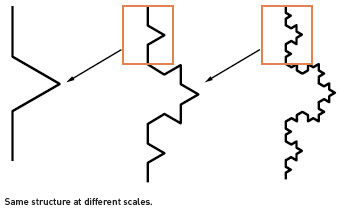The 2017 live-action remake of Beauty and the Beast brought the beloved fairytale to a new generation. While the visuals and performances captivated audiences, for music aficionados, the enduring magic lies in its iconic theme song. As a fellow music enthusiast, revisiting this film recently sparked a deep dive into the musical architecture of “Beauty and the Beast.” The more I explored it, the more impressed I became by its sophisticated simplicity.
Penned by the legendary Alan Menken, the melody might seem straightforward – diatonic and repetitive – yet beneath the surface lies a foundation of Classical compositional thought. What elevates this song beyond a typical pop ballad and into the realm of timeless classic?
Let’s delve into the analysis.
Deconstructing the Magic: Finding the Song’s Core
A powerful method for understanding a song’s brilliance is to pinpoint its most impactful moment and analyze how the composer builds towards that peak.
Here’s the familiar 1991 arrangement of the song:
In “Beauty and the Beast,” the transition from the bridge to the second verse, specifically highlighting the phrase “as the sun will rise,” stands out as a particularly poignant and striking moment.
Menken achieves this impact not merely through chance. He masterfully reimagines familiar musical clichés and prepares them through intricate motivic development. These techniques, as we will discover, are deeply rooted in the traditions of Classical music.
Reimagining Musical Clichés with Classical Depth
The “sun will rise” moment cleverly employs two well-worn musical clichés:
However, Menken doesn’t simply present these clichés in isolation. Instead, he intricately weaves them together, incorporating a deceptive cadence, into a unified and powerful musical gesture.
But how does Menken orchestrate this seamless blend?
Let’s examine the modulation from the bridge (“Ever just the same…”) to the second verse (“Tale as old as time…”).
To appreciate the ingenuity of Menken’s approach, let’s first consider a stripped-down version of this transition, devoid of its defining elements: no deceptive cadence, no bVI-bVII-I cadence, and no modulation.
Example 1. The transition to verse 2 with its defining features removed.
Now, let’s reintroduce the deceptive cadence. Menken concludes the bridge with a transposed deceptive cadence. Crucially, this cadence alone doesn’t necessitate a modulation. He could have easily remained in D-flat major, continuing with the progression underlying “…least, Both a little scared”:
Example 2. Transition to Verse 2 with a deceptive cadence but no modulation or bVI-bVII-I progression.
Imagine if Menken desired both the deceptive cadence and a modulation up a whole step, but without employing the bVI-bVII-I progression. Utilizing C-flat as a standard pivot chord (a chord shared between D-flat and E-flat major), the modulation would sound like this:
Example 3. Transition to Verse 2 with a deceptive cadence and modulation but still no bVI-bVII-I progression.
While this third iteration is closer, Menken’s actual composition elevates it further. He uses C-flat as a pivot chord, but his masterful employment of the bVI-bVII-I progression imbues this pivot with profound depth. To understand this nuance, let’s briefly define some musical terms.
Cadences and the Art of Cadential Surprise
A typical cadence (like V-I, for instance, G-C in the key of C major) consists of two chords: the “leading chord” and the “resting chord.” Often, a “preparing chord” precedes these two (e.g., IV-V-I, or F-G-C in C major).
[For readers with advanced music theory knowledge, I’ve chosen the terms “preparing,” “leading,” and “resting” instead of the more conventional “predominant,” “dominant,” and “tonic” to ensure these functional roles aren’t solely tied to specific scale degrees.]
In our third example above, C-flat clearly functions as a “resting” chord. While it bridges the old key (D-flat) to the new key (E-flat) in the subsequent bar, it doesn’t act as a “preparing,” “leading,” or “resting” chord within the cadence itself.
However, in Menken’s version, the cadential function of C-flat is deliberately ambiguous. Drawing inspiration from Chopin’s compositional techniques, Menken ingeniously reinterprets what we initially perceive as the “resting” chord of the cadence as a “preparing” chord. This clever maneuver creates a kind of auditory “whiplash,” as our perception of the chord’s function is instantly reversed.
Consider Chopin’s Fourth Ballade as an example. From the second to the third system in the score, Chopin establishes a clear cadence from a “leading” F7 chord to a “resting” B-flat minor chord, settling us firmly in B-flat minor. Yet, Chopin immediately redefines this B-flat minor chord as a “preparing” chord to modulate back to the Ballade’s home key of F minor.
(The video linked below starts slightly earlier for context; the cadence in question occurs at 26’26.)
[Insert Chopin Ballade No. 4 Video Here]
Now, listen to how Menken employs a similar strategy in “Beauty and the Beast”:
Much like Chopin, Menken cadences from a “leading” B-flat chord to a “resting” C-flat chord, initially leading us to expect E-flat minor. However, he immediately redefines the C-flat chord as the “preparing” chord in the bVI-bVII-I progression, facilitating the modulation to E-flat major. This “preparing” C-flat chord is followed by a D-flat “leading” chord and, finally, the E-flat “resting” chord, resolving into the major key.
Menken essentially asks, “Why write a phrase extension to solidify the new key of E-flat, like you did, Joseph (referencing the example)? I can confirm the key change right now and switch to major mode in the process!”
Menken’s voice leading, particularly in the cello line starting at “sure,” is exceptionally brilliant in supporting this condensed harmonic shift. Beginning beneath the word “(be-)fore,” the cellos descend stepwise from B-flat (the submediant degree in D-flat) down to E-flat, the new tonic.
This descending stepwise motion to the tonic adds an element of inevitability to Menken’s “whiplash” modulation. Scales descending from dominant to tonic are a fundamental concept in Western music. Listeners instinctively recognize this sound and its association with closure. While the arrival in E-flat remains striking, the descending scale mitigates any jarring quality, layering a sense of expected resolution onto the surprise.
The Power of Motives: Building Blocks of Musical Meaning
The modulation’s impact isn’t solely derived from Menken’s ingenious repurposing of musical clichés. In fact, he meticulously prepares the listener for this moment from the song’s very beginning through the strategic use of melodic motives.
A motive is a concise melodic or rhythmic idea that is repeated and transformed throughout a musical piece. Motives are prevalent across Western music – pop, classical, jazz, film scores – but often function as surface-level details. (For instance, explore Toby Rush’s chart analyzing the first movement of Beethoven’s Fifth Symphony).
Utilizing motives in this superficial way is akin to constructing a sculpture from Lego bricks:
 Lego Dragon Sculpture
Lego Dragon Sculpture
While we perceive the dragon as a whole, we also readily discern the individual Lego blocks due to their distinct shapes and their surface-level arrangement.
A prime example of such a surface motive in “Beauty and the Beast” is the rhythmic pattern: four eighth notes followed by a longer note. The vocal melody is predominantly constructed using this motive, although singers like Angela Lansbury and Emma Thompson imbue it with expressive rubato.
Most Western music leverages this clear surface connection to establish cohesion and a framework for contrast. What distinguishes Classical music, particularly Germanic Classical music, is the structural use of motives.
This isn’t a binary distinction. Many structural motives also appear on the surface. However, structural motivic use implies that motives, beyond shaping immediate details, contribute to: (a) shaping larger musical phrases, (b) defining phrase beginnings and endings, and (c) influencing the harmony itself (rather than merely being superimposed).
Employing motives structurally is more akin to creating fractals:
 Fractal Image
Fractal Image
See the full Mathematics Illuminated lesson for further exploration of fractals.
As the fractal design becomes more intricate, the underlying repeating pattern, scaled at different levels, might become less immediately apparent:
The coastline of England, a less obvious fractal example, highlighting the complexity of structural motivic use.
(From the same source as above).
This subtlety is amplified when motivic patterns are interwoven with other musical elements. For instance, Brahms structurally employs the C#-D-C motive in his Intermezzo op. 118, no. 2, but casual listeners might struggle to consciously identify it, especially as it shapes the larger musical form. Instead, they simply perceive an unusually emotionally resonant piece.
Unveiling the Motives in “Beauty and the Beast”
Like Brahms, though perhaps less intensely, Menken imbues the ascending minor second interval with structural significance, prominently featuring it throughout the “Beauty Of The Beast Song.”
This interval initiates the “Beauty and the Beast” motive that opens the song (played by flutes and then violins). As part of this motive, the minor second also concludes both verses. More subtly, it underpins the inner voice leading in the introduction – the F to G-flat in bars 1-2 – and in the singer’s entrance at the start of each verse – the F to G-flat from “Tale” to “time” and “Just” to “change.” Beyond its melodic prominence, Menken emphasizes the F to G-flat in the bass line during the bridge, as the harmony oscillates between the mediant and subdominant (F and G-flat).
To highlight these repetitions, a clarinet plays the F-G flat motive over the original music in the following example:
Example 4a. The F to G-flat motive
Notice how Menken often layers multiple iterations of the motive simultaneously. This frequency and diversity of repetition is what I mean by Menken “preparing” the listener. He subtly trains you to recognize the motive, even unconsciously.
However, Menken withholds a crucial variation: he never transposes this F-G flat motive throughout the song until this pivotal moment.
Therefore, when he presents the motive transposed as B-flat to C-flat in the deceptive cadence, it powerfully draws attention to itself. Listen again to the clarinet-enhanced version, now focusing on the highlighted B-flat to C-flat motion in the deceptive cadence:
Example 4b. The F to G-flat motive as it develops into the transposed deceptive cadence, B-flat to C-flat.
Having captured your attention with this deceptive cadence, Menken reinforces the element of surprise by employing the “cadential whiplash” from the bridge into the second verse, as described earlier.
This “cadential whiplash” is effective precisely because the deceptive cadence sets it up. Without the deceptive cadence, Menken could still have used the bVI-bVII-I progression, but the outcome would lack the motivic connection and would modulate down to C major, resulting in a net decrease in tension:
Example 5: The “cadential whiplash“ without its deceptive cadence preparation.
In essence, the ascending minor second motive is crucial to the impact of this passage because it establishes the deceptive cadence. But at least one other motive contributes to Menken’s masterful composition.
In addition to its voice leading function, the descending cello line mentioned earlier also possesses motivic significance. It transposes the pitches of the vocal line from “Ever as before” (a melodic motive first heard in “Then somebody bends”) up a diatonic step.
In other words, as we hear those descending stepwise pitches in the cello, our minds anticipate the pattern’s completion, not just because we understand scales, but also because this specific scale fragment carries meaning within the song itself.
In summary, Menken ingeniously employs two distinct motivic ideas to guide us to and underscore the impactful moment at “as the sun will rise” in the “beauty of the beast song.” Just as Menken’s “cadential whiplash” echoes Chopin, this motivic development is rooted in the Classical tradition.
The presence of these Classical elements shouldn’t be surprising. “Beauty and the Beast” was composed by the same Alan Menken who improvised in the style of Bach and Beethoven and holds a musicology degree from NYU. While composers don’t need Classical techniques to create profound music, “Beauty and the Beast” exemplifies how these techniques can enrich simplicity and create enduring depth.
 Joseph Sowa Newsletter
Joseph Sowa Newsletter
Stay Tuned for More Musical Insights
Sign up to receive updates on my music and compositional ideas!

